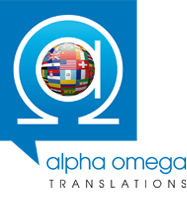It’s one of the first rules of marketing: engage your target audience. When it comes to translating marketing content for a global audience, engaging your target audience means more than accurately translating campaigns into different languages. It means using marketing transcreation.
Marketing transcreation? What’s that?
If you’ve never heard the term ‘marketing transcreation,’ fear not. We’ll explain everything below. Suffice it to say, if you don’t consider marketing transcreation for your campaigns in foreign markets, your audience will know. Even a technically accurate translation looks like a poortranslation without it. Your audience will immediately recognize that your campaign was written in a different language and they will feel like an afterthought—the opposite of engaged.
In this article, we discuss significant differences between translation and transcreation, when transcreation is necessary, and how to use marketing translation to reach globalaudiences. So, let’s get started.
Marketing Translation vs. Marketing Transcreation
There’s a big difference between translating technical, legal, medical, or scientific documents and translating media content, literature, or marketing. The difference has to do with the objectives of technical translation vs. creative translation. Technical translation requires conceptual exactness and terminological precision.
For marketing copy, though, successfully conveying the original text in a way that preserves the same intent requires symbolism, puns, and metaphor. The objective of marketing copy is to target human emotions rather than simply conveying information. Doing this well requires translators who do not simply “know” another language, but who are also creative writers themselves.
Unlike direct translation, marketing transcreation involves additional content adaptation and in many cases, customized imagery.
To offer a simple example: in the U.S., marketing information for Walt Disney World might describe the park as “half the size of Rhode Island.” But since this is not a reference most people in non-U.S. markets understand, in Japan, the campaign compares Disney World to Tokyo’s subway system and in the U.K., it’s described as the size of Grater Manchester.
As may be obvious by now, marketing transcreation requires a specific set of skills including copywriting skills. Instead of simply providing text, transcreation specialists may start with a creative brief for a specific campaign. The purpose of transcreation is, above all, to produce new copy that resonates in a new foreign market. While the original concept remains, the message sounds, feels, and looks brand new.
Transcreation also modifies images and recreates the visual context fora campaign, since visuals are important for communicating human emotions. Working together with localization, transcreation makes recommendations for adapting functions and features for digital content too. For instance, a call-to-action button might link to a different service or offering in the Spanish version of your company’s website.
At the end of the process, a transcreated press release, webpage, multimedia presentation, advertisement, brochure, news article, or email newsletter takes on a lifeof its own.
When to Transcreate
Now that we understand the difference between translation and transcreation, let’s discuss when transcreation is most beneficial for global businesses.
Transcreation is worthwhile for:
- Content that includes local references, wordplay, or humor.
- Content in which cultural relevancy is critical to connecting with a local market.
- Campaigns targeting local, specific personas, rather than a general global persona.
In addition, perhaps the biggest benefit for transcreation is that it gives your marketing team a common platform for interacting and communicating with other marketers in your target foreign market. The marketing research benefits of transcreation cannot be understated.
Marketing transcreation allows your team to:
- Work with local editors and writers who have inside knowledge of the local market and current affairs.
- Create program-specific guidelines and editorial standards for contributors in different countries to build a consistent brand voice and messaging.
- Localize keywords for higher reach and optimize articles for search in local languages.
Still not convinced? Currently, 52% of website copy is written in English and most brands seem unaware of the extent to which bad translations can make content ineffective or even unintelligible. While it’s hard to measure how much this could affect audience engagement in the long-run, ask yourself: How long would I stay on a webpage that treats me as an afterthought, or, worse, doesn’t make sense at all?
How to Use Transcreation to Reach International Audiences
Once you’re convinced that it’s time for your company to explore transcreation, you’ll want to hire the right language partner. But before you take the plunge, make sure you do your homework. If you don’t have at least a working knowledge of how to use transcreation to reach international audiences, you will be at the mercy of your LSP.
Here are a few strategies to keep in mind:
1. Do some competitive analysis
We recommend doing some market research prior to starting the marketing transcreation process to find out how your competitors in the same markets create their messages. Also, it’s helpful to identify any trends popular in the culture.
It’s a good idea to find a language partner who can do this research too and then compare notes. Decide together what it will take for your marketing content to be successful in the target market.
2. Choose a language partner who understands the target audience
The right language service provider will build your translation project around the desired audience. It helps if, before you go to your chosen translation partner, you have a clear description of your ideal audience. This allows your agency to provide you with the best linguists.
3. Review, review, review
Once you receive the first version of your transcreated campaign, it’s a good idea to have it checked by an in-country reviewer. Don’t be afraid to tap into your resources in foreign markets. Ideally, this person will have marketing experience and understand the product or service you’re promoting.
4. Test
Use market-research to ask questions and gain valuable insights into your audience. Can you form a local focus group? Can you contact a marketing research group in your target market to work with your team to analyze your copy? This will get you the best feedback. If the messages pass the test, it’s time to roll out the campaign.
5. Measure performance
Don’t forget to come up with metrics to measure the success of your new campaign. Choose simple metrics at first to make sure your team can quickly analyze the results. Then stay consistent as you evaluate the success of your campaign across different markets. Of course, you may need to tweak your campaign along the way, so be ready to dedicate some time to the whole process.
Mastering the art of marketing transcreation requires time and money. But short of opening a marketing office to create original content for your target foreign markets, it’s the best way to target customers in a new market. If brands demand the best possible marketing copy in their home markets, why settle for second-rate content abroad?
At Alpha Omega Translations, we have specialists who understand marketing transcreation. For more than 20 years, our experts have worked with multinational companies on marketing materials and media related documents. We know the needs of this particular industry and we handpick marketing specialists for each transcreation project. Would you like to discuss your project? Request your free quote today!



